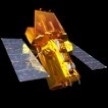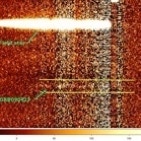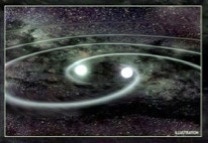
SERGIO’S RESEARCH
As Swift evolved from GRBs to Time Domain Astronomy also my interests widened accordingly. One of the main bottlenecks of optical imaging survey is the characterisation of the newly discovered transients (at least redshift but also a spectroscopic follow-up). For these reasons, we proposed the Son Of X-Shooter (SOXS) at an ESO call for new instruments at the NTT. We were selected and are now working hard to build it. Operations are expected to start in 2021.

Recently I became interested in tidal disruption events. First I pull it out of the bag a new model to explain the peculiarities of GRB 101225A, in terms of a minor body falling onto a Galactic neutron star. The minor body gets tidally disrupted accounting for the peculiarities of the “GRB”. Unfortunately, the model does not work for GRB101225A, but in principle it could work and a similar event might be discovered in wide-field optical surveys.
A few months later Swift discovered another jewel: Sw J1644+57, the reactivation of an AGN’s jet caused by the tidal disruption of a star. Recently we found a very peculiar AGN, showing two bright very similar flares, which we interpreted as the first recurrent TDE due to an orbiting star. The next passage is predicted to occur in 2019. Two Nature papers come out from these discoveries.

Since its launch I lead the calibrations of the X-Ray Telescope (XRT), which is the most strategic instrument onboard the Niel Gehrels Swift observatory, providing an accurate position (2-3 arcsec) for almost every Gamma-Ray Burst (GRB) observed. Calibrating an instrument, by itself, is not a highly rewarding activity in terms of papers (just a few refereed papers and a number of SPIE contributions).
However, calibrating the XRT gave me a deep insight into all the problems and technicalities of the instrument, putting me in the best position to exploit its science. These include single burst papers but also the statistical analysis of GRB properties and theoretical papers on the emission mechanisms. Among them, there are 9 papers on Nature and 3 paper on Science. One Nature paper has me as the leading author and deals with the first supernova (pinpointed by the GRB explosion) caught in the act of exploding. The observation started less than an hour before the explosion and this is even earlier than the famous 1987A in the Large Magellanic Cloud.

In parallel with the high-energy data on GRBs, I am also involved in the optical/NIR follow-up of these high energetic transients.

Before my involvement in GRB science, my main research activity was in the study of the accretion onto compact objects, high-energy astrophysics and relativity in general, and it still continues! These studies concentrate on the different accretion regimes that can experiment a magnetic, fastly rotating neutron star when matter accretes onto its surface (ranging from accretion to ejection to the reactivation of a radio pulsar). I wrote a review on these topics more than 20 years ago and it is still copiously cited. In recent years the discovery of transitional X-ray pulsars enormously renewed the interest in the field. These sources confirm the possibility to switch on and off a radio pulsar in a low mass X-ray binary, a possibility that we envisaged long ago. One Nature paper came out of this.

Scientific curiosity took me to undertake the development of a detection algorithm based on the wavelet transform to detect point as well as extended sources in X-ray images. We systematically applied this algorithm to the entire dataset of ROSAT HRI data creating the Brera Multi-scale Wavelet catalogue of HRI sources (BMW-HRI)including more than 29,000 sources. We also analyzed all sources looking for pulsed signals. We found RX J0806.3+1527 consisting of two white dwarfs orbiting every 321 s.
The algorithm then tailored to Chandra ACIS-I data for which we build the BMW-Chandra catalogue including more than 15,000 sources.

Finally, in close collaboration with the technological group at OAB, I am involved in the theoretical design of wide-field X-ray telescopes. Thanks to my expertise in mirror design, fabrication and calibration, as well as science exploitation I am (and have been) involved at different levels in a (large) number of foreseen X-ray missions ranging from JET-X, Panoram-X, EXTRA, HEXIT, Simbol-X, Duet, ESTREMO, EDGE, XIAO, Xenia, WFXT, EXIST, NHXM, LOFT, Athena, eXTP, Theseus (maybe I forgot some). I led the Joint UV Survey Telescope (JUST) proposal in response to the ESA small mission call.
And clearly SOXS! This is the new spectrograph for the ESO/NTT. SOXS will start observing the sky in late 2025 and the Consortium will have access to 180n/yr for 5 years to study the transient sky. I am deeply involved and committed to it.
(slightly refurbished in January 2023)